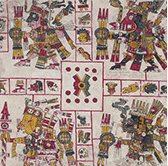The project (current phase)
23 Maggio 2022
The current phase of the project has a substantial relation to
the UNI 11845: 2022 standard "Processes for managing the long-term preservation
of digital images with the use of the FITS format". In its evolved manifestation, the project
examines thoroughly the requirements that a FITS files-based repository should implement for
the purpose of long term preservation, because the sole use of the FITS format is a necessary, but not sufficient, requirement.
The result of this research, along with the participation of the other institutions that have shared
the same interest, has given rise to a standardization initiative in which the experience
of the BAV served to act as a laboratory for validating its principles. The use cases included
in the standard, and developed with the materials provided by ICCU, ICAR, ESA (*), as well as by
BAV, have confirmed the applicability of these principles in the domain of the digitization of library and archival assets.
The new standard, published in January 2022, carefully describes the properties and the requirements that
a FITS files-based repository should satisfy in order to ensure durable accessibility and usability over time.
The standardization initiative, endorsed by the Technical Committee UNI/CT14 "Documentazione e Informazione"
(Documentation and Information) whose members are experts coming from archival institutions, libraries, scholars,
industries, has been assigned to the relevant subcommittee UNI/CT14/SC01 "Applicazioni per la gestione documentale"
(Document Management Application”).
Another fundamental asset of the current initiative is the implementation of a new software (it is a work
in progress) which will improve the acquisition flows for the digitization of manuscripts, printed materials and
archives following the specifications of the Library.
Long term data preservation
The long term data preservation archive of the Vatican Apostolic Library has been implemented around two key elements: the use of the FITS file format and the PREMIS standard. The project conforms to UNI 11845:2022 implementing the 7 high-level requirements:
- Homogeneity
The archive is composed by FITS file created with the same internal structure (same HDU number and types) and with the same number of Header keys always written in the same order. Each FITS file is associated with an XML PREMIS file. - Validation
The archive implements two independent file validation processes: a "real time" and a "offline" process. The first one runs immediately after the creation of each FITS file, a software that share no code with the FITS converter checks that the file is compliant with all the specifications of the project. The second one runs periodically, each 12 months, and verify again the compliant of each file, in particular using the "CHECKSUM" and "DATASUM" values for each HDU. - Conversion
The Library maintain a software, always active and updated, able to convert FITS file format to derivative formats suitable for scholars, researchers, and the general public. The output files format will certainly change in the future, but the input FITS file will still be the same. - Information retrieval
All the information needed for the full accessibility and use of the file contained in the archive can be obtained from the file themselves, without any dependencies from external sources of data (see The FITS file of the Library). - Semantic content: What am I looking at?
Whatever the nature of the digitised object, it is essential its association to a description, at least a basic one, as external or internal metadata structure documenting the semantic content that can therefore enable the archived data to be understood over time. (see The FITS file of the Library). - Origin and history: What is the origin and history of each file ?
Whatever the nature of the digitised object, it is essential to know the provenance of the file along with all the details about its creation, ingestion, further modifications for the purpose of long term preservation. This kind of information is essential and it is invoked or directly embedded in the FITS files. (see The FITS file of the Library). - Structural models: How data in the archive are connected each other ?
The digital images belonging to an aggregated object, e.g. a volume, are documented in their physical and logical sequences; it means that each image, and its related metadata associated to a same shelfmark, are listed in a unifying FITS file. (see The FITS file of the Library)
The FITS file of the Library
The project has led to the production of new software, whose open source core is available at the Github repository Project FITS4LAM : Flexible Image Transport System for Libraries, Archives, Museums.
Credits of the ongoing project:
- Giuliano Giuffrida
Coordination of IT Services, Vatican Apostolic Library
(UNI/CT14/SC01 Expert - Editor of the new standard) - Daniele Lisci
Coordination of IT Services, Vatican Apostolic Library - Paola Manoni
Head of the Coordination of IT Services, Vatican Apostolic Library
(UNI/CT14 Chair, UNI/CT14/SC01 ISO Expert) - Manlio Miceli
Head of the IT Center, Vatican Apostolic Library
- IT Center, Vatican Apostolic Library
- Domenico Izzo
- Riccardo Moroni
- Andrea Ottaviani
- Alfredo Pagano
- Francesco Gambino
Software Senior Engineer, DB Seret S.r.l.
(UNI/CT14/SC01 Expert)





